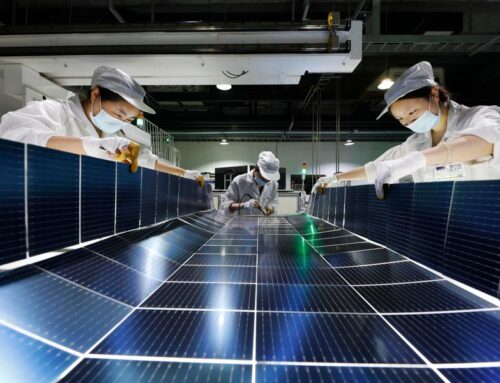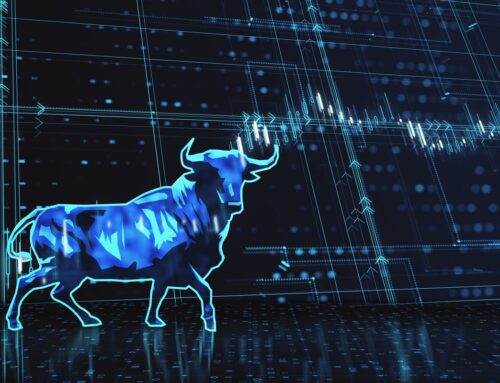2025 Climate Tech Companies to Watch: Envision Energy and its “smart” wind turbines
October 6, 2025
Envision Energy, one of China’s biggest wind turbine makers, has expanded into batteries, green hydrogen, and industrial parks designed to run heavy industry on clean power. With flagship projects in Inner Mongolia and new ventures planned abroad, the company is testing whether renewables can decarbonize sectors that electricity alone can’t reach.
Wind energy is now one of the cheapest and largest sources of renewable energy globally.
Chinese wind turbine manufacturers dominate the sector, and among the top suppliers is Envision Energy, a company that has gone beyond building turbines to rethinking how entire industries can run on clean energy. In 2024, Envision was the second-biggest wind turbine maker globally, according to data from research service BloombergNEF. Its “smart” wind turbines use artificial intelligence to generate more electricity than conventional models, and its industrial parks aim to decarbonize heavy sectors such as steel, chemicals, and manufacturing.
Founded in Jiangyin by entrepreneur Zhang Lei, Envision began as a wind turbine manufacturer but has since expanded its mission to become an “operating system” for the clean-energy transition, tying together electricity generation, energy storage, and fuel production.
Envision’s flagship project, in Ordos, Inner Mongolia, has transformed a coal-dependent region into a showcase for industrial decarbonization. The facility produces batteries for electric vehicles, manufactures wind turbines, and generates green hydrogen—all powered entirely by wind and solar energy.
Wind power has always struggled with reliability. Seasonal and hourly swings in wind patterns make it difficult to depend on turbines for steady, large-scale supply. Envision’s “smart turbine” technology helps to mitigate those fluctuations by treating wind farms as coordinated networks rather than isolated machines. Each turbine analyzes wind conditions in real time, adjusts its performance, and synchronizes with others to capture more energy. Early results suggest this system can increase generation by roughly 15% compared to conventional turbines.
It is also testing a two-blade turbine design that it hopes could generate the same amount of electricity as a typical three-blade turbine while using fewer materials.
The company has also invested heavily in green hydrogen, seen as one of the few options for decarbonizing sectors that cannot easily switch to using electricity, such as steel, chemicals, and shipping. Its facility in Inner Mongolia is among the largest of its kind, designed to produce 320,000 tons of green ammonia annually (a compound of hydrogen and nitrogen that’s used as a clean fuel).
- Industry: Renewable energy
- Founded: 2007
- Headquarters: Shanghai, China
- Notable fact: Envision claims its renewable energy systems have prevented 200 million tons of CO2 emissions—equivalent to removing 43 million cars from the road for a year.
Potential for impact
Industrial emissions are among the hardest to tackle. Many manufacturing processes depend on extreme heat and chemical reactions that cannot easily be powered with electricity alone. Envision’s Ordos project in Inner Mongolia is the largest of its kind, generating clean heat and fuel on-site while easing pressure on the grid.
The company now wants to replicate the idea abroad, with plans for an integrated green hydrogen park in Spain (the first of its kind in Europe), a net-zero industrial park in Brazil, and another in Australia. All remain in early stages of development, but if they succeed, they could offer a blueprint for decarbonizing heavy industry without sacrificing competitiveness or jobs.
A second piece of the puzzle is energy reliability. Industrial operations need steady, predictable power—a challenge for wind and solar. Envision’s “smart turbine” technology aims to close that gap by boosting wind farm efficiency and improving forecasting. For factories trying to run entirely on renewables, that added stability could make the difference between a pilot project and a viable long-term shift.
Caveats
Envision’s integrated industrial park model comes with very high barriers to entry. These sites require enormous upfront investment and years of planning, along with coordination among governments, utilities, financiers, and multiple industries. The Ordos facility took years to develop and received hundreds of millions of dollars of government investment. What looks like a neat plan on paper can quickly become a decade-long negotiation in practice.
Green hydrogen is also still far more expensive than conventional fossil-based hydrogen, and the infrastructure for storing and transporting it at scale is still in its infancy.
Geopolitics adds another layer of uncertainty. As a Chinese company, Envision’s overseas projects run headlong into rules that require companies to use more local materials and labor, national security reviews, and sensitivities around control of critical infrastructure. In markets like the US and the EU, clean-energy imports from China already face stiff tariffs and regulations.
Finally, the industry is constrained by physical supply chains. Scaling up numbers of turbines, batteries, and machines that make hydrogen from water depends on steady access to rare earths, copper, lithium, transformers, and specialized steel. None of these materials are immune to bottlenecks or geopolitical disputes, and rules requiring local sourcing can make things even harder. Transmission lines and grid interconnections, meanwhile, already take years to build in many countries.
Next steps
At the China Development Forum in March 2025, Envision founder Zhang Lei said that Chinese advanced technologies could enable the production of ten times more energy at 90% lower costs over the coming decades. The projects underway in Spain and Brazil will be an important test of how adaptable and scalable that approach really is.
In 2025, Envision will begin operating what it claims will be the world’s largest green hydrogen bunkering facility for ships, potentially demonstrating how hydrogen can help to cut emissions from international shipping. The company is also expanding its battery manufacturing capabilities to serve the growing electric vehicle market while maintaining carbon-neutral production processes.
If Envision’s approach proves viable at scale, the company would not just be a leader in China’s clean-energy transition; it would reshape global efforts to decarbonize heavy industry.
Search
RECENT PRESS RELEASES
Related Post




